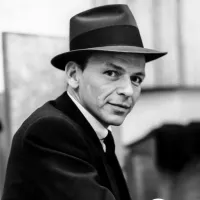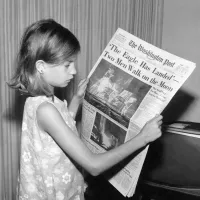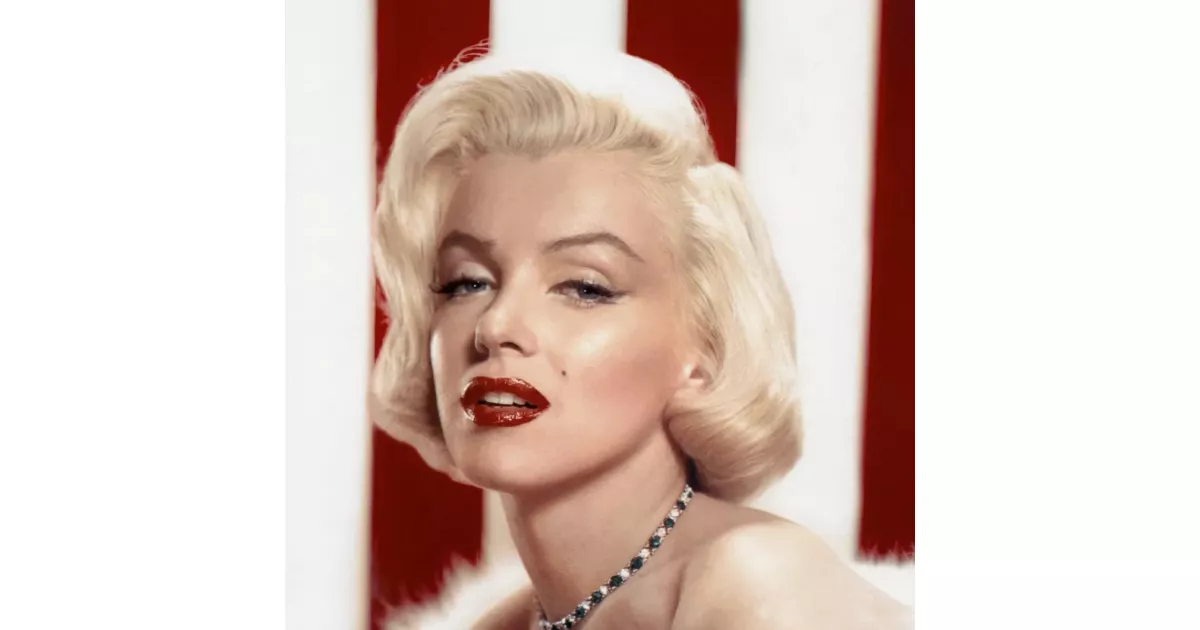Marilyn Monroe was an iconic American actress and model who rose to fame in the 1950s and early 1960s. Renowned for her portrayal of comedic "blonde bombshell" characters, she became a major sex symbol and a symbol of the era's changing attitudes toward sexuality. As a leading actress for a decade, her films earned $200 million by the time of her death in 1962, solidifying her status as a pop-culture icon.
1923: Gladys divorces John Newton Baker
In 1923, Gladys, Marilyn Monroe's mother, successfully filed for divorce and sole custody of her two oldest children.
1924: Gladys marries Martin Edward Mortensen
In 1924, Gladys, Marilyn Monroe's mother, married Martin Edward Mortensen. The union lasted only a few months.
1925: Affair with Charles Stanley Gifford
In 1925, Gladys had an affair with Charles Stanley Gifford, who biographers believe was Marilyn Monroe's father.
June 1, 1926: Marilyn Monroe's Birth
On June 1, 1926, Marilyn Monroe, originally named Norma Jeane Mortenson, was born. She became a famous American actress and model.
1933: Gladys buys a house
In the summer of 1933, Gladys bought a small house in Hollywood and moved seven-year-old Monroe in with her.
January 1934: Gladys's Mental Breakdown
In January 1934, Gladys had a mental breakdown and was diagnosed with paranoid schizophrenia, leading to Marilyn Monroe becoming a ward of the state.
September 1935: Placement in orphanage
In September 1935, Grace Goddard placed Monroe in the Los Angeles Orphans Home #2, Hollygrove.
1936: Grace becomes legal guardian
In 1936, Grace Goddard became Marilyn Monroe's legal guardian.
1937: Monroe's second stay with Goddards
In the summer of 1937, Marilyn Monroe's second stay with the Goddards only lasted a few months.
September 1938: Living with Ana Lower
In September 1938, Marilyn Monroe began living with Grace's aunt, Ana Lower, in Sawtelle and was enrolled at Emerson Junior High School.
1941: Attending Van Nuys High School
Around early 1941, Marilyn Monroe returned to live with the Goddards in Van Nuys and began attending Van Nuys High School.
June 19, 1942: Marriage to James Dougherty
On June 19, 1942, just after her 16th birthday, Norma Jeane married James Dougherty to avoid returning to the orphanage.
1943: Dougherty enlists in Merchant Marine
In 1943, James Dougherty enlisted in the Merchant Marine and was stationed on Santa Catalina Island, where Marilyn Monroe moved with him.
April 1944: Dougherty shipped out to Pacific
In April 1944, Dougherty was shipped out to the Pacific.
January 1945: Quit working at factory
In January 1945, Marilyn Monroe quit working at the Radioplane Company and began modeling.
August 1945: Contract with Blue Book Model Agency
In August 1945, defying her deployed husband and his disapproving mother, Marilyn Monroe moved on her own and signed a contract with the Blue Book Model Agency.
June 1946: Contract with Acting Agency
In June 1946, Marilyn Monroe signed a contract with an acting agency through Emmeline Snively.
August 1946: Contract with 20th Century-Fox
In August 1946, Marilyn Monroe's contract with 20th Century-Fox began. She and Lyon selected the stage name "Marilyn Monroe".
September 1946: Divorce from James Dougherty
In September 1946, Marilyn Monroe divorced James Dougherty.
1946: Modeling career
By early 1946, Marilyn Monroe had appeared on 33 magazine covers after the agency deemed her figure suitable for pin-up.
February 1947: Contract renewal with Fox
In February 1947, Marilyn Monroe's contract with Fox was renewed, and she was given her first film roles in 'Dangerous Years' and 'Scudda Hoo! Scudda Hay!'.
August 1947: Fox contract not renewed
In August 1947, Fox did not renew Marilyn Monroe's contract, and she returned to modeling.
March 1948: Contract with Columbia Pictures
In March 1948, Joseph M. Schenck persuaded Harry Cohn, the head executive of Columbia Pictures, to sign Marilyn Monroe.
September 1948: Contract not renewed
In September 1948, Marilyn Monroe's contract with Columbia was not renewed.
1948: Film Roles
In 1948, Monroe had film roles in Dangerous Years and Scudda Hoo! Scudda Hay!.
1949: Nude Photo Shoot
In 1949, Marilyn Monroe had a nude photo shoot and when she was asked what she had on, she replied, "I had the radio on".
1949: Posed for a Nude Calendar
In 1949, Marilyn Monroe posed for a nude calendar. This information was revealed publicly in March 1952.
December 1950: Negotiation of a Seven-Year Contract with 20th Century-Fox
In December 1950, Marilyn Monroe's agent, Hyde, negotiated a seven-year contract for her with 20th Century-Fox. The contract allowed Fox to opt out of renewing it each year. Hyde's death days later left Monroe devastated.
1950: Roles in critically acclaimed works
In 1950, Marilyn Monroe landed small roles in several films, including 'All About Eve' and 'The Asphalt Jungle', which were both critically acclaimed.
1950: Screen tested for Born Yesterday
In 1950, Marilyn Monroe screen-tested for the lead role in Born Yesterday.
1951: Photograph in Look Magazine
In 1951, Marilyn Monroe was featured in a photograph in Look magazine practicing with African-American singing coach Phil Moore.
1951: Longer contract with Fox
In 1951, Monroe signed a longer contract with Fox, becoming a popular actress with roles in several comedies and dramas.
February 1952: Named Best Young Box Office Personality
In February 1952, the Hollywood Foreign Press Association named Marilyn Monroe the "best young box office personality".
March 1952: Public Revelation of Nude Calendar Photos
In March 1952, Marilyn Monroe publicly revealed that she had posed for a nude calendar in 1949. This revelation, strategized with the studio, gained her public sympathy and increased interest in her films.
January 1953: Release of Niagara and Photoplay Awards
In January 1953, Niagara was released and met with both controversy and popularity. Also, Marilyn Monroe won the "Fastest Rising Star" award at the Photoplay Awards, wearing a revealing gold lamé dress that caused a sensation.
December 1953: Featured in First Issue of Playboy
In December 1953, Marilyn Monroe was featured on the cover and as the centerfold in the first issue of Playboy, without her consent.
1953: Hollywood Star
In 1953, Marilyn Monroe became one of the most marketable Hollywood stars. She played leading roles in 'Niagara', 'Gentlemen Prefer Blondes', and 'How to Marry a Millionaire'. Her nude images were used in the first issue of Playboy.
1953: The Kinsey Report
In 1953, the Kinsey report was released which contributed to the flux of ideas about morality and sexuality that characterized the Fifties in America.
January 14, 1954: Marriage to Joe DiMaggio
On January 14, 1954, Marilyn Monroe married retired New York Yankees baseball star Joe DiMaggio at the San Francisco City Hall, in an effort to counter negative publicity surrounding her suspension.
January 1954: Suspension from 20th Century-Fox
In January 1954, Marilyn Monroe was suspended by 20th Century-Fox when she refused to begin shooting another musical comedy, The Girl in Pink Tights, due to dissatisfaction with her contract and roles.
April 1954: Release of River of No Return
In April 1954, Otto Preminger's western River of No Return, the last film Marilyn Monroe had filmed prior to her suspension, was released.
September 1954: Filming of Subway Grate Scene for The Seven Year Itch
In September 1954, Marilyn Monroe filmed the iconic subway grate scene for Billy Wilder's The Seven Year Itch on Lexington Avenue in Manhattan, attracting a large crowd and generating significant publicity.
October 1954: Filed for Divorce from Joe DiMaggio
In October 1954, after returning from New York City to Hollywood, Marilyn Monroe filed for divorce from Joe DiMaggio after only nine months of marriage, citing his jealousy, controlling attitude, and physical abuse.
November 1954: Founded Marilyn Monroe Productions (MMP)
In November 1954, after filming for The Seven Year Itch wrapped up, Marilyn Monroe left Hollywood for the East Coast, where she and photographer Milton Greene founded their own production company, Marilyn Monroe Productions (MMP).
1954: Founded film production company
In 1954, Marilyn Monroe founded her own film production company with Milton Greene.
1954: Suspension from film project
In early 1954, Monroe was briefly suspended for refusing a film project but returned to star in 'The Seven Year Itch'.
January 1955: Legal Battle with Fox Begins
In January 1955, a year-long legal battle began between Marilyn Monroe and Fox, after she asserted that she was no longer under contract as Fox had not fulfilled its duties, such as paying her the promised bonus.
October 1955: Finalization of Divorce and Affair with Arthur Miller
In October 1955, Marilyn Monroe's divorce was finalized. Following this, her relationship with playwright Arthur Miller became increasingly serious. Despite concerns from the studio due to Miller's FBI investigation for alleged communism, Monroe refused to end the relationship, leading the FBI to open a file on her.
1955: Success of 'The Seven Year Itch'
In 1955, Marilyn Monroe starred in 'The Seven Year Itch', one of the biggest box office successes of her career.
1955: Mentor relationship ends
In 1955, Marilyn Monroe's mentor relationship with Natasha Lytess ended.
1955: Building film company and acting studies
In 1955, Monroe dedicated her time to building her film company and began studying method acting under Lee Strasberg at the Actors Studio. Fox awarded her a new contract.
February 23, 1956: Name Change to Marilyn Monroe
On February 23, 1956, she legally changed her name to Marilyn Monroe. The press reacted favorably to her decision to fight the studio. Time called her a "shrewd businesswoman" and Look predicted that the win would be "an example of the individual against the herd for years to come".
June 29, 1956: Marriage to Arthur Miller
On June 29, 1956, Marilyn Monroe and Arthur Miller were married in a civil ceremony in White Plains, New York. Following the wedding Monroe converted to Judaism, resulting in Egypt banning all her films. The media viewed the marriage as a mismatch.
August 1956: Release of 'Bus Stop'
In August 1956, 'Bus Stop' was released and achieved both critical and commercial success. Marilyn Monroe's performance was highly praised. She also received a Golden Globe nomination for Best Actress in a Leading Role - Musical or Comedy for her performance.
1956: Started Using Barbiturates, Amphetamines, and Alcohol
In 1956, Marilyn Monroe began using barbiturates, amphetamines, and alcohol to alleviate anxiety and chronic insomnia, which exacerbated her existing problems.
1956: Critically acclaimed performance in Bus Stop
In 1956, Marilyn Monroe delivered a critically acclaimed performance in 'Bus Stop'.
1956: Filming 'The Prince and the Showgirl'
Throughout 1956, Marilyn Monroe was filming MMP's first independent production, 'The Prince and the Showgirl', at Pinewood Studios in England. Difficulties arose due to conflicts between her and Laurence Olivier. Despite the challenges, filming was completed by the end of 1956.
June 1957: Release of 'The Prince and the Showgirl'
In June 1957, 'The Prince and the Showgirl' was released to mixed reviews and was unpopular with American audiences. In Europe, Marilyn Monroe was awarded the Italian David di Donatello and the French Crystal Star awards and nominated for a BAFTA for her performance.
1957: Independent Production and BAFTA Nomination
In 1957, Monroe released her first independent production, 'The Prince and the Showgirl', for which she received a BAFTA nomination.
1957: Hiatus and Health Issues
In 1957, after returning from England, Marilyn Monroe took an 18-month hiatus to focus on family life. She experienced an ectopic pregnancy. She was also briefly hospitalized due to a barbiturate overdose.
July 1958: Filming 'Some Like It Hot'
In July 1958, Marilyn Monroe returned to Hollywood to star in Billy Wilder's comedy, 'Some Like It Hot'. The production was difficult, with Monroe demanding numerous retakes and struggling to remember her lines. There were disagreements with Wilder on how she should play the role.
March 1959: Release of 'Some Like It Hot'
In March 1959, 'Some Like It Hot' was released and became a critical and commercial success. Marilyn Monroe's performance earned her a Golden Globe for Best Actress in a Leading Role - Musical or Comedy.
1959: Hiatus after 'Some Like It Hot'
After 'Some Like It Hot', Marilyn Monroe took another hiatus until late 1959.
1959: Golden Globe Award
In 1959, Marilyn Monroe won a Golden Globe for her role in 'Some Like It Hot', a critical and commercial success.
September 1960: Release of 'Let's Make Love'
In September 1960, 'Let's Make Love' was released but was unsuccessful. Critics found Marilyn Monroe appearing "rather untidy" and "lacking the old Monroe dynamism".
November 1960: Filming of 'The Misfits' concludes
Between July and November 1960, Marilyn Monroe filmed 'The Misfits' in the Nevada desert. The filming process was complicated due to personal and health problems. By November 1960, filming for 'The Misfits' concluded.
January 1961: Divorce from Arthur Miller
In January 1961, Marilyn Monroe and Arthur Miller officially divorced in Mexico, marking the end of their marriage.
1961: Focus on Health and Well-being
In 1961, Marilyn Monroe did not film any new projects. Instead, she focused on her health, undergoing surgery for endometriosis and gall bladder problems, and receiving hospital treatment for depression. She was erroneously placed on a ward meant for people with psychosis, where she was locked in a padded cell at the Payne Whitney Psychiatric Clinic.
1961: Starring in 'The Misfits'
In 1961, Marilyn Monroe's last completed film, 'The Misfits', was released. The filming, which took place between July and November 1960, was difficult due to her failing health and struggles with drug addiction.
1961: Last completed film
In 1961, Monroe's last completed film, 'The Misfits', was released.
May 19, 1962: Singing "Happy Birthday, Mr. President"
On May 19, 1962, Marilyn Monroe sang "Happy Birthday, Mr. President" at President John F. Kennedy's birthday celebration at Madison Square Garden. She wore a beige, skintight, rhinestone-covered dress, creating a memorable and controversial moment.
August 4, 1962: Marilyn Monroe's Death
August 4, 1962 marks the date of Marilyn Monroe's death. By this time, her films had grossed $200 million.
August 4, 1962: Housekeeper Stays Overnight
On August 4, 1962, Monroe's housekeeper Eunice Murray stayed overnight at her home in Los Angeles.
1962: Return to Public Life and Filming 'Something's Got to Give'
In the spring of 1962, Marilyn Monroe returned to the public eye. She received a "World Film Favorite" at the 19th Golden Globe Awards and began shooting the film 'Something's Got to Give'.
1963: Publication of The Feminine Mystique
In 1963, Betty Friedan's The Feminine Mystique was published. This book contributed to the flux of ideas about morality and sexuality that characterized the Fifties in America.
1973: Publication of Marilyn: A Biography
In 1973, Norman Mailer's "Marilyn: A Biography" was published, which introduced the speculation that Monroe's death was not a suicide, but rather a murder.
1982: Los Angeles County District Attorney Investigation
In 1982, the Los Angeles County District Attorney John Van de Kamp conducted a "threshold investigation" to see if a criminal investigation should be opened into Monroe's death, due to speculation of murder. However, no evidence of foul play was found.
2022: DNA Comparison
In 2022, a DNA comparison between Marilyn Monroe's DNA and that of one of Charles Stanley Gifford's descendants supported the theory that Gifford was her father.
2024: Monroe's House Designated Historic Cultural Monument
In 2024, the Los Angeles City Council approved Marilyn Monroe's house being designated as a Historic Cultural Monument.
Mentioned in this timeline
California is a U S state on the Pacific Coast...

Frank Sinatra nicknamed Chairman of the Board and Ol' Blue...

San Francisco is a major commercial financial and cultural hub...
Japan is an East Asian island country situated in the...

Los Angeles is the most populous city in California and...

News encompasses information about current events disseminated through various media...
Trending
2 months ago Kansas Jayhawks face UCF Knights: Sorsby's performance crucial in Big 12 matchup.
Jaylen Warren is a professional American football running back currently playing for the Pittsburgh Steelers in the NFL He had...

7 months ago Michelle Obama Reveals Barack's Joke After Her Mother's Death and Pope's Viewing Habits.

Tony Dow was a renowned American actor producer director and sculptor best known for his role as Wally Cleaver in...
2 months ago IREN Stock Surges on AI Cloud Deals and Bitcoin Mining Integration.
10 days ago Lawsuit Filed Over KISD Stabbing; Killeen Principal Resigns From Ira Cross
Popular

Candace Owens is an American conservative political commentator and author...

Ilhan Omar is an American politician currently serving as the...

XXXTentacion born Jahseh Dwayne Ricardo Onfroy was a controversial yet...

Oprah Winfrey an American talk show host television producer actress...

Frederick Christ Trump Sr - was an American real estate...

Tom Cotton is an American politician and Army veteran currently...


